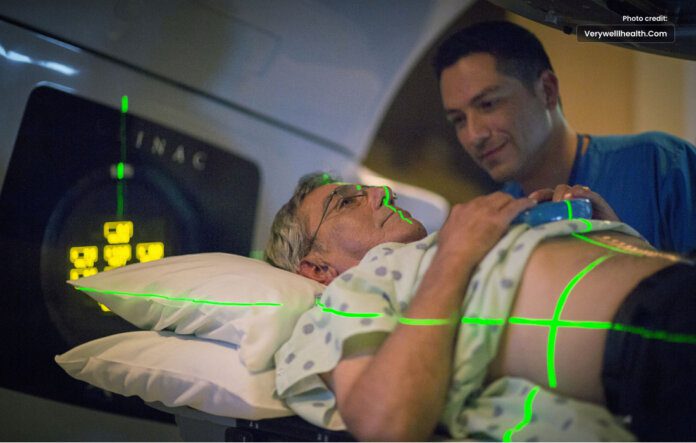RT: Ionizing radiation for cancer treatment; known as radiotherapy.
Introduction:
In the relentless battle against cancer, medical science has made remarkable strides in developing innovative treatment modalities. Among these advancements, radiation therapy stands out as a potent weapon in the arsenal of oncology. With its ability to target and destroy cancer cells while minimizing damage to healthy tissue, it has revolutionized cancer treatment. In this blog, we will delve into the intricacies of radiation therapy, exploring its principles, types, and remarkable therapeutic benefits.
Understanding Radiation Therapy:
Its, also known as radiotherapy, employs high-energy radiation to eliminate cancer cells or prevent their growth. It works by damaging the DNA within the cancer cells, impairing their ability to divide and grow. This treatment can be administered externally or internally, depending on the nature and location of the cancer.
Types of Radiation Therapy:
-
External Beam Radiation Therapy:
The most common form of radiation therapy, external beam radiation therapy (EBRT), involves the use of a machine called a linear accelerator. This machine directs beams of radiation precisely to the cancer site from outside the body. The treatment is carefully planned to deliver the maximum dose of radiation to the tumor while sparing nearby healthy tissues.
-
Brachytherapy:
Brachytherapy, also known as internal radiation therapy, involves placing radioactive sources directly into or near the tumor site. The radioactive sources emit radiation, delivering a high dose of targeted radiation to the cancer cells. Brachytherapy is particularly useful in treating localized cancers, such as prostate, cervical, and breast cancer.
-
Stereotactic Radiosurgery (SRS) and Stereotactic Body Radiotherapy (SBRT):
SRS and SBRT are highly precise radiation therapies that deliver high doses of radiation to small, well-defined tumors in the brain or body. These techniques use advanced imaging and computer-guided technology to accurately target tumors, enabling intense radiation doses while minimizing exposure to surrounding healthy tissues.
Benefits of Radiation Therapy:
-
Precise Targeting:
This therapy allows for precise targeting of cancerous cells, sparing normal cells from unnecessary damage. Advanced imaging techniques, such as MRI, CT scans, and PET scans, help physicians determine the exact location of tumors, enabling highly accurate treatment planning.
-
Non-Invasive and Pain-Free:
It is non-invasive, meaning it does not require surgery. Patients do not experience pain during the treatment sessions. Although some may encounter temporary side effects, such as fatigue, skin irritation, or hair loss, these are often manageable and subside after the treatment is complete.
-
Curative and Palliative Applications:
It can be used with curative intent, aiming to eliminate cancer entirely. It can also be employed as a palliative treatment to alleviate symptoms and improve the quality of life for patients with advanced cancer, reducing pain, shrinking tumors, and relieving obstruction.
-
Adjunct to Other Treatments:
This is often used in combination with surgery and chemotherapy. It can be administered before surgery (neoadjuvant therapy) to shrink tumors and facilitate surgical removal. Alternatively, it can be used after surgery (adjuvant therapy) to eradicate any remaining cancer cells and reduce the risk of recurrence.
Future Directions:
The field of radiation therapy continues to evolve, driven by ongoing advancements in technology, treatment planning, and biological understanding. Techniques such as proton therapy and carbon-ion therapy hold promise for improved cancer targeting while minimizing damage to healthy tissue. Additionally, personalized treatment approaches, including adaptive radiation therapy and immunoreaction, are being explored to enhance treatment efficacy and patient outcomes.
Conclusion:
It has transformed cancer treatment by providing an effective and precise means of combating cancer. Its ability to deliver targeted radiation to cancer cells while sparing healthy tissues has made it an indispensable tool in the fight against this devastating disease. As technology continues to advance and our understanding of cancer biology deepens, radiation therapy is poised to play an increasingly vital role in eradicating cancer and improving the lives of countless patients worldwide.
Find out more about https://rockedgeurdu.com/




